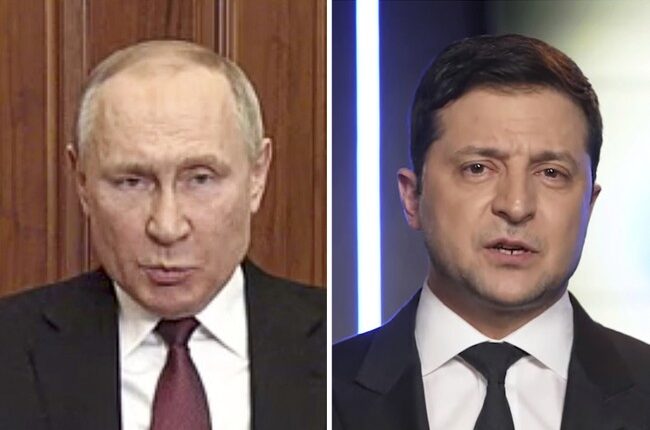
In response to Ukraine’s “Operation Spiderweb” strike on 41 Russian strategic bombers, Russia initiated a significant aerial attack on Kyiv on Friday. This attack was seen as direct retaliation for the unprecedented assault on Russian aircraft within its territory.
The Ukrainian Air Force reported the launch of Russian ballistic missiles and drones towards Ukraine from various directions on Friday. This marked a swift and forceful response from Moscow to Ukraine’s bold military operation, considered one of the most daring moves in the ongoing conflict.
As a result of the Russian assault, fires erupted in various buildings throughout Kyiv due to falling debris and drone strikes. Tymur Tkachenko, the Head of Kyiv City Military Administration, confirmed the attacks on residential areas in the Ukrainian capital, including damage to a high-rise building in the Solomyansky district of Kyiv.
Kyiv Mayor Vitali Klitschko confirmed the ongoing nature of the assault, telling residents via Telegram: “The attack on the capital continues. Stay in shelters!” Klitschko also reported fires in the districts of Holosiivskyi and Darnytskyi of the Ukrainian capital.
This escalation comes just days after Ukraine executed what military analysts are calling one of the most sophisticated covert operations in modern warfare.
READ MORE:
A Ukrainian drone attack has hit more than 40 Russian planes deep in Russia’s territory, a Ukrainian security official told The Associated Press, in an operation that took over 1.5 years to execute and was personally supervised by Ukrainian President Volodymyr Zelensky.
The June 1 operation, codenamed , targeted four airfields: Dyagilevo in Ryazan region, Ivanovo in Ivanovo region, Belaya air base in Russia’s Irkutsk region, which is located in south-eastern Siberia over 4,000km east of the frontline, and Olenya air base in Russia’s Murmansk region, some 2,000km away from Ukraine’s border.
The operational complexity of Ukraine’s strike reveals the Security Service of Ukraine’s (SBU) growing capabilities. The sheds were loaded onto trucks that were driven to the perimeter of the air bases. The roof panels of the sheds were lifted off by a remotely activated mechanism, allowing the drones to fly out and begin their attack.
Ukraine’s domestic security agency, the SBU, has claimed responsibility for the operation, called “Spider’s Web”, and said that in total 41 Russian warplanes were hit. The SBU estimated that the damage caused by the operation amounted to $7 billion, and 34 percent of the strategic cruise missile carriers at Russia’s main airfields were hit.
Strategic Impact on Russian Capabilities
The aircraft targeted represent the backbone of Russia’s long-range strike capability. Tu-95, Tu-22 and Tu-160 are Russian heavy bombers regularly used by Moscow to launch missiles at Ukraine. Western military analysts emphasize the long-term implications of these losses.
Defense analyst Tyler Rogoway noted that Russia lost strategic aircraft “directly tied to validity of their nuclear deterrent.” Justin Bronk, a senior research fellow at the Royal United Services Institute in London, said the attack was “a stunning success for Ukraine’s special services”.
The replacement challenge is significant. Bronk noted that replacing some of these aircraft would be very difficult for Russia because they have not been produced for decades. While Ukrainian officials claim 41 aircraft were hit, more recent assessments suggest at least 13 Russian aircraft were confirmed destroyed, with others suffering varying degrees of damage.
Crimean Bridge Also Under Fire
Adding to Russia’s strategic headaches, Ukraine also executed a separate underwater attack on the Kerch Bridge connecting Russia to occupied Crimea on Tuesday, June 3. Ukraine’s security service, the SBU, said on Telegram that its agents had mined the piers of the road and rail Crimean Bridge, also called the Kerch Bridge, and detonated the first explosive at 4:44 a.m. Tuesday.
The agency said it had used 1,100 kilograms of explosives, which “severely damaged” the underwater pillars supporting the bridge. The bridge serves as both a critical supply line for Russian forces and a symbol of Putin’s control over the annexed Ukrainian peninsula.
These Ukrainian operations occurred just days before renewed peace talks in Istanbul, suggesting Kyiv’s intention to demonstrate continued military capabilities despite being outnumbered. Officials from Russia and Ukraine in Istanbul on Monday failed to reach a ceasefire but agreed to exchange more prisoners.

















